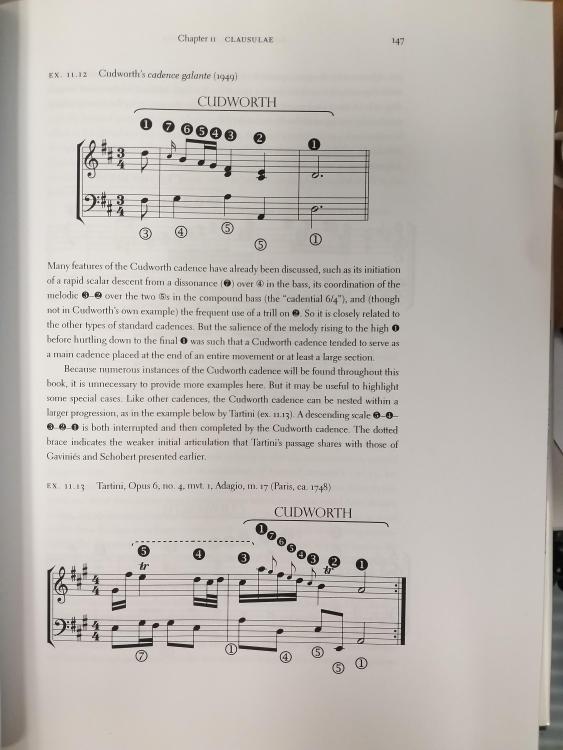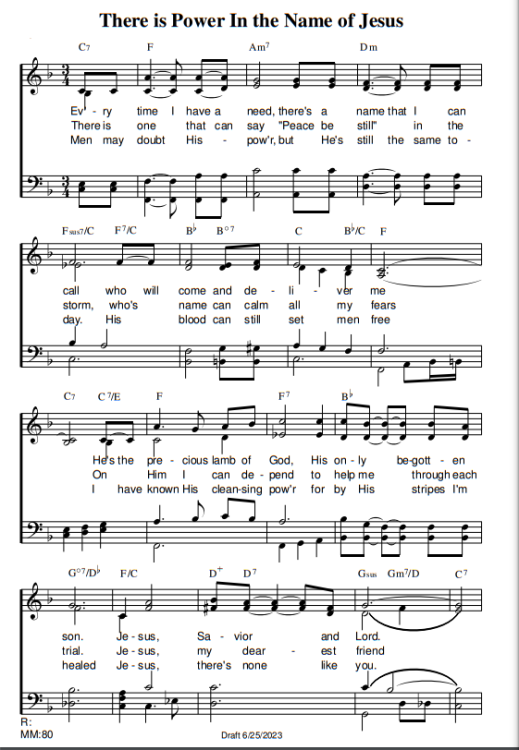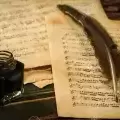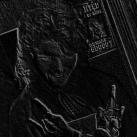Leaderboard
Popular Content
Showing content with the highest reputation on 07/03/2023 in all areas
-
I've been publishing a lot of short pieces (I think that simple, easy but enjoyable-for-all pieces are also worth mentioning, not everything has to be innovative, long and complex to be good!) but I'm going to focus on a sonata of 3 movements as I need it for my university entrance exam 😭 so i'm not going to post in a while. This an orchestration of a prelude I wrote just a year ago (tomorrow is its birthday!) and I started introducing woodwinds! Enjoy! Partitura sin título.mp3 Prelude.pdf3 points
-
Today I present here the third movement of my Symphony in E, just finished some days ago. Unlike the other two movements, which were composed 5 years ago and heavily and constantly revised until I posted them here, this one is actually a composition that has been done in the last 1-2 weeks and I think it's summarizes really well what I actually can do with a blank paper. It's almost 9 minutes long in a standart form (scherzo-trio-scherzo). The scherzo is more like the opposition beetwen two themes than appear many times with different modifications and character changes, and the trio is a calm section (almost in a Ländler way) being a way of getting away from turbulences in the scherzo. Actually my first motivation or starting idea was from Dvorak furiants and scherzi but ended up being something really different (but there's some evidences of this in some parts in the grouping of the bars or the accents that desestabilize the 3/4 bar. Also there's a lot of Mahler and Bruckner influence (especially in the very last bars). Hope you enjoy it! (other thing that I wanted to comment is that I uploaded the second movement in the wrong topic last time so I leave the link here so you can listen to it if you want: *Link*)2 points
-
Brand new release! A lively piece for full Orchestra and Piano in seven-time, hope to lift your Summer spirits- in seven! Thanks!2 points
-
Hi all. I've just written this trio in literally a few hours, after being asked to produce a piece for a concert. Had to step in at very short notice, after another composer pulled out. Still have a few days to make revisions before the scores go out to the musicians, and I just wanted to ask whether my double-stops are playable? Also the top notes in my violin part may not be practical? They're too high to play as regular notes on the E-string, and I'm not sure those particular notes/combinations are achievable as natural or artificial harmonics? Especially the F6 in Bar 18, and Bars 44-45. (I've just notated them at sounding pitch for the moment.) Any help gratefully received! (Revised versions will be posted lower down the thread.)2 points
-
This is absolutely incredible!!! The orchestration is so interesting and the harmony is incredibly unique! Man I wish I could compose like this2 points
-
1 point
-
A piece primarily for lutes I composed inspired by the aesthetic of games like Diablo and Blasphemous, but with a more classical approach to the composition. This is the non-looping version. I wound up using entirely string instruments by accident. Even all the supporting parts are some kind of string lol. Let me know what you think of it! Also, if you're playing Diablo IV, send me a PM and we can play sometime.1 point
-
My first post here, verifying for competition. Written a few months ago, probably the most linear and straightforward piece I’ve successfully written.1 point
-
A brand new composition. A Waltz! French - Greek - Austria - German styles inspired! (I think!) Although it starts as a chamber music, it ends with a large ensemble. I imagined it as a small group playing the accordions in a Parisian street, and then slowly others join the group. I tried adding some more variations following the tips of some members of the forum and I tried to keep the duration shorter than usual. What do you guys think? Nikolaos Dimopoulos - Lumiére Waltz1 point
-
Im looking for some feedback on this exercise that I composed. I tried to make use of French Augmented 6th Chord. I have started to study the usage of augmented 6th chords and wanted feedback on if I am using them properly here. Thanks!1 point
-
It's normal that we are not always inspired, but sometimes we go through a long period of time in which it is difficult to compose anything at all. What do you do in those situations? I think this post will help many novice composers and make these creative blocks more bearable. There's more than one way to skin a cat! In my case, I start walking or I go to the botanical garden and try to clear my mind. Also, it is important to notice that during stressful times it's very difficult to get inspired.1 point
-
1 point
-
hey sorry for not getting back to you! Peter just informed me more people commented haha, Im bad at checking. I use logic!1 point
-
Nice job! I think you use the French 6th properly in the various harmonic contexts. Now try using the Italian 6th and the German 6th too! (Plus there are other rare varieties with whimsical geographical names such as the Australian 6th and Japanese 6th LoL) Thanks for sharing.1 point
-
I wrote this for fun. Whenever I try to write fugues I don't have the patience to check all the intervals. Also, in this case, the tonalities sometimes get a little fuzzy. What I did was to start from a simple material Subject I and its counter-subject I, written in invertible counterpoint. Answer (subject II) and countersubject II, written in invertible counterpoint. In this way, these parts can work the same up and down or the other way around. And with this, I followed the following scheme:1 point
-
1 point
-
I agree with everything you said Sam. Parts of it sound like they'd work very well with an animated movie. I made the mistake of asking which DAW was used, when it's best Left Unexplained. The clue was in the name!1 point
-
Hey Samuel! I've been enjoying this one very much. This one is simplistic and very pastoral given that 6/8 time and pedal points. The spacing for the chord Peter mentioned is amazing and it makes the chord not too close to clash with each other. I also agree with Quinn that that da capo can actually be written out with slight change on instrumentation. The change may not require to be big since it's a prelude, but some slight changes with mix this up very well. Apart from changing that pizz., having the role reversed for the winds and strings seems like a good idea for me! For me in the middle section (b.8), I may have the oboe and bassoon placed one by one instead of appearing together, in order to prevent that quaver rest on the last quaver beat, since you have the clarinet there for accompaniment and this may prevent too thick a texture for the first half of the measure while too thin for the latter half. But this is personal. I would also love this to be extended since it's very lovely and I want it non-stop lol! Thx for sharing Samuel! Henry1 point
-
Hi @Luis Hernández, It's interesting that you're alternating the subjects, with the answer replaced by a new subject. The cudworth cadence is interesting as I'm having the Gjerdingen book in my hand!! I'm having my detective mode on and there's indeed parallels haha. B.12 there's a p5 between top and bottom voice (A-E to Bb-F). B. 20 there's a parallel octave C-D for the lower two voices. B.22 there's a hidden 5th for the top voice and bottom voice (C-G to F-C).B.29-30 there's a parallel octave (D-C) btw the top and bottom voice. B.31-32 there're parallel octaves btw the top and bottom voice (G-F-Eb). I feel like the voice leading of this one is more modern, especially with the escape tones, but ofc this is personal. Thx for sharing! Henry1 point
-
I go along with PeterthePapercomPoser with this. It's very nice, good scoring if from a piano score, smooth, easy listening. I felt the close should be slightly more conclusive. Given your Da Capo, the da-capo'd bit could have a couple of bars added as a coda - maybe just a repeat of bars 6 & 7 slightly decorated without the cello pizz? - but something anyway) but other than that, all good. Maybe also an idea to mark when you want string chords divisi or otherwise - more important at times like the Violas splitting into 3 parts in bar 10. These are details that examiners may look out for when assessing your work. Wishing you the best with your entrance submission. Quinn.1 point
-
One day in spring when first awoken to sunlight I was immediately struck with melodies of a tune I made 3 years ago. I decided to give it an update in wait for the sunlight weather that has now arrived! is it time for breakfast already orchestrated score pdf.pdf is it time for breakfast already orchestrated.mp31 point
-
Hey @olivercomposer, I agree with @Nikolaos Dimopoulos on the instrumentation. This makes the music fit for western films. I think the music does match the artwork. Again your hallmark vocal in 1:05! Thx for sharing! Henry1 point
-
Hi, Here is the first movement of a piano sonata in e-flat major please enjoy BREAKDOWN OF MOVEMENT:1 point
-
Hello @malumCompositor, For me this is a good try on the sonata form. -For the harmonic plan of the exposition, I agree with @PCC. In history the harmony differs earlier than the materials in the exposition (or the rounded binary). It's fine if you end the exposition proper with a cadence first before smoothly transitioning back to the exposition repeat/development and modulate to other keys including tonic. The first movements of Haydn's two string quartets in B minor, op.33 no.1 and op. 64 no.2, and Brahms' Clarinet Quintet in B minor make perfect examples as they play on the ambiguity of B minor/D major as well for the opening theme. But here you never make a proper cadence for the B flat major 2nd subject first before transitioning, so the structure will be unclear. Make sure at least have a PAC on Bb major first before heading back to the opening Eb tonic! -For the figuration of b.33, just alternate the D-F to F-D in either one of the inner parts will make the sound more varied. -For me I feel like the movement is quite repetitive since the texture always sticks to the motive presented. For example the uprising 16th motive in b.24 is almost always played in octaves except in b.95. The exposition the motive does combine with quaver figures but the overall sentence itself is repeating. Make sure to vary the texture will make it more refreshed! -I also think that the development is the best section. B.77 is ambiguous harmonically with the B natural hanging over a E natural bass, and I will prevent the double E natural repeating b.79,81 & 83 since the sound is not full. B.94 is my favourite since you're having counterpoint here and mixing the textures! -For b.113 would it be better to a half cadence of C minor? -The entrance of Eb major in b.150 is ambiguous. You have the Eb major introduced as the V/Ab first then suddenly enters it as the recapitulation, and the effect is not surprising or dramatic at all. I think it will be easier to write with a clear cadence on the dominant of Eb first to enter to the key more smoothly in the recap, as (again) @PCC noted. -For me maybe it will better to enter the recapitulation in a different, then have the coda restore the Eb major to make the music more interesting, since I feel like the Eb major is over-abundant here. But that's personal. Thx for sharing! Henry1 point
-
Yes now the SoundCloud link is visible. You have indeed captured the dramatic and suspenseful atmosphere of spaghetti films. The first thing that came to my mind is Clint Eastwood preparing for a duel! It also reminded me the movie "Once upon a time in the west"! I love the sound of the guitar and adding the vocals at the end gives it an epic feel. For that short duration I think it's perfect because you managed to compose a pleasant melody which has every potential to become widely known. It could easily become the soundtrack to a video game trailer like Red Dead Redemption! Good luck with the competition!1 point
-
Hey Alex, I was yawning all the time these few days so did not review this yearning piece haha! I love how contemplative this piece is. All those added notes and non-functional harmony is great for the effect. I think they are playable since the widest interval is only a sixth, but I don't play violin myself. For me the F6 is absolutely playable with normal blowing, as I remember Beethoven uses C#7 in his op.131 finale. I think you can give cello more melodic significance since it's the most contemplative instrument of the three. Thanks for sharing! Henry1 point
-
That's an interesting topic! I remember Peter has raised the similar issue before: For me the writer's block has both the long term and a short term one. I always experience a short term writer's block during composing. I find it very hard to make each small steps and finding new paths in the progression of my works. The only exception of my recent work is probably the Wind Quintet movement when I had to stop myself to be inspired to write. I don't compose chronologically from the start to finish, but have all the passages independently developed. The most frequent block will be how to link those passages. If I face one, I will just add details to the score first. Having a block for me is a good thing, since more energy exhausted to the block for me will help me write more magical moments haha! Also I know that I always write with difficulties, so those difficulties now aren't obstacles to me anymore given that I write the blocks but still result in some beautiful music. It's just that I write slower than others lol which is fine, since I don't write for a living. For the long term one: I face a long term writer's block of 1 to 2 months after the completion of my Clarinet Quintet no. 1 in C minor (yup I'm going to advertise it lol) since that is quite a long work and I felt like all my creative energy is exhausted. I just slowly picked up my inspiration to finish the sextet movement. But now I know how difficult it would be to compose big work (for me) after big work. So for this year after finishing the sextet movement, I took inspiration from Vince (again! from his preludes) and wrote something smaller in scale, which resulted in the first movement of my Third Piano Sonata! It's better to write something less gigantic and original than not writing at all for me haha! Thx for your sharing Samuel! Henry1 point
-
https://drive.google.com/file/d/1IqN_ZR2vIqN8iZdZo9wcdxHjMsLZjiEd/view?usp=share_link I hope you enjoy my first try at scoring to film (really more like editing to score).1 point
-
Your score is a little hard to follow, as there are some weird notational things in it, but just listening to your piece it's pretty chill and has a somewhat "stardew valley" type of feel. I've used Plogue Sforzando with my DAW (Ableton), and it's not bad but it takes work to make it feel expressive. Might be worth looking into other sound fonts and libraries to hear different options and feel how various libraries represent certain instruments and sounds. There are several that have free or inexpensive (entry level/trial) options, Spitfire comes to mind. I think as a composition, everything's nice and there are some beautiful ideas! I think where things might be improved is in the musicality of the playback. All your notes have the same intensity and the dynamics and phrasing could be more intense. If you're using notation software like finale or sibelius or musescore, try writing in more dynamics to help the phrasing, and some articulations to emphasize important notes or to de-emphasize lesser notes. If you're using a DAW like pro-tools or ableton, try automoting some note velocities and dynamic changes. Keep writing! You're definitely on the right track and should keep pursuing this 🙂 Gus1 point
-
As someone who believe that sonata form is the best musical form of all, I can't just let you butcher it 😒 But first, the good parts. Although a bit repetitive in many places amounting to a heavily repetitive feeling, I think you have presented the themes/ideas in a very thoughtful way, there are questions and answers, so each individual part feels connected. Your development(?) (question mark... I'll come to that) section feels also quite carefully planned out and has an overall sense of direction. It is lacking in personality but I think if you are imitating this sort of Mozart/Haydn style of music in the 21th century it will inevitably given that feeling no matter how good the music is. There are some harmonic issues generally throughout the piece but with a bit of studying I think you can improve this piece easily. Why are you using ABA form in the exposition? At the end of the exposition, you have to move away from where you began the exposition with. This is why the second subject is almost always in another key and ends there for the exposition, and is the only reason why monothematic sonatas would even work. End your codetta in a foreign key. The recapitulation is basically a repeat of the exposition. If you have actually moved away from the home key first in the exposition your recapitulation would then necessarily and naturally sound different from the exposition, which is unfortunately not the case here. Again with the issue of keys. You ending the development section (which is the best part of your piece, kudos) in the home key then followed by the recap in the same home key is anticlimatic. In this styling of music writing, at the end of the development section it is typical to use the dominant key as the pedal point (i.e. the V chord for many bars) for the home key to return as a perfect cadence. If your first theme of the expo is more fluid then you can play around with this transition (check out my sonatina in A major btw). Overall I like this well-mannered piece, but it has many elements of rooms for improvement that need reworking to be made good.1 point
-
1 point
-
Ending is very rushed, might revise. Intended to create a very short piece, this is more of a short experiment rather than an attempt at a more encompassing work.1 point
-
Short Waltz's in G Major and A Minor! hope you enjoy and don't be shy with critique.1 point
-
I wrote this chorale just now. Let me know if there's anything I can improve on! Thank you chorale_3.mp31 point
-
1 point
-
Hi everyone! I wrote this classical (mostly Haydn) style menuet as a studie piece. I am applying to the Liszt Ferenc Academy of Music (in Budapest, Hungary) this year, and I want to send in this menuet (it is a requirement). I am hoping some of you can help me out with ideas, how to make it more stylish, more accurate, wether I should extend it with a variation or not.1 point
-
Thank you for the comments, especially for the suggestions! I worked with it, I hope it became more stylish and more compact. Feel free to share thoughts about it, I still have about a month until the deadline.1 point
-
04 Temple of Varýtita (Day Exterior [Gravity On]).mp3 I would love any feedback as I am rather still a beginner in the music field. Check out my other compositions on my Soundcloud https://on.soundcloud.com/CBqfm1 point
-
I have no idea why I did not post this here, but I am going to start up a string of tutorials on my Youtube channel. I talk about tuplets at the very basic level, and why you may want to use them in your writing. Give the video a thumbs up, comment if you wish, and don't forget to subscribe if you want to see more of this type of content from me. Video is really long, but I break all my content up into chapters. I'm open to suggestions on how to improve my videos. For example, if there's too much dead space I can try to make my videos progress a little faster. Or if the videos are just too long, I can break them up into smaller segments. I'm literally experimenting with video length.1 point
-
I didn't make a youtube video for this one, so you'll have to just listen to an MP3 like a peasant. It's a loopable piece of video game music I composed that's more in the action style of older films.1 point
-
Hi forum! I'm back, or am I? Had I ever left? This post made by @Zimr Music reminded me of an old piece that I made for a story inside a Minecraft server that I will likely never finish because of the enormous amount of workforce needed, studying, planning, blah, blah, blah. The title says enough about it, I'd say, and I don't want my words to distract you. ♫ Here's the piece ♫ Ancient Pyusisk's mineshaft__noplayer__.mp3 And here's the pdf in case someone wants to check it out: 29 - Ancient Pyusisk's mineshaft.pdf This ambient piece was composed at the end of 2019 if I recall correctly, and that'd be all the info. As always, hope you find it decent! Kind regards, Daniel–Ømicrón. .Div1 { border: 5px outset hsl(52,100%,50%,0.85); border-radius: 1px; margin: 0; background-color: hsl(52,10%,10%,1); color: black; text-align: center; font-family: "CalligraphyFLF",Edwin,Helvetica; width:auto; height:auto; max-width: 600px; max-height: 200px; } .Div2 { display: block; border: 10px outset hsl(52,100%,50%,0.8); border-radius: 1px; margin: 5px; color: white; width:inherit; vertical-align:top; background-color: white; background-image: url(https://i.imgur.com/dbMMjfs.jpg); background-size:60%; background-position: 0% 70%; text-align: left; font-family: "CalligraphyFLF",Edwin,Helvetica; font-size: 140%; height: 115px; } .Div3{ display:inline-block; border: 5px outset hsl(52,100%,35%,0.96); text-align:left; margin: 5px; width:auto; vertical-align:top; background-color: black; } .Div4{ display:inline-block; text-align:center; width:inherit; font-family: "CalligraphyFLF",Edwin,Helvetica; font-size: 100%; } .Img1{ max-height: 90px; max-width: 137px; font-color: white } a.one:link{ text-decoration:none; color: #fff6c6; } a.one:visited{ color: #daff8e; } a.one:hover{ color: #edffc6; } a.one:active{ color: #fff6c6; } audio::-webkit-media-controls{ background-color: hsl(35,100%,8%,0.9); border-radius: 20px; } audio{ height:42px; width: 400px; border: 3px outset hsl(52,100%,35%,0.96); border-radius: 64px; background: #2B2309; } audio::-webkit-media-controls-mute-button { background-color: hsl(47,100%,78%,0.83); border-radius: 20px; margin:0 } audio::-webkit-media-controls-current-time-display { color: hsl(47,100%,78%,1); font-family: "Brock Script", Helvetica; } audio::-webkit-media-controls-time-remaining-display { color: hsl(47,100%,78%,1); font-family: "Brock Script", Helvetica; } audio::-webkit-media-controls-timeline { background-color: hsl(48,100%,78%,0.1); border-radius:25px; margin-left:12px; margin-right:12px; } audio::-webkit-media-controls-volume-slider { background-color: hsl(48,100%,78%,0.1); border-radius:25px; padding-left:6px; padding-right:6px; } audio::-webkit-media-controls-panel { background-color: #2B2309; } audio::-webkit-media-controls-play-button { background-color: hsl(47,100%,78%,0.36); border-radius: 20px; } audio:hover {transform: scale(1.01);filter: drop-shadow(1px 1px 1px #E0FFA1);} p.p1{ font-family:"Edwin",Bitter,'Arial Black'; font-size: 19px; color: #daff8e; margin:0; }1 point
-
Hello, Myself and Markus have been collaborating on a project centered on galant pedagogy. Here our first realizations on a Partimento by Francesco Durante (1684-1755). Partimenti are figured and unfigured basses used during Baroque and Classical period by the students who learn compositions to do realizations on based on a set of rules. All the information about history, rules and Partimenti can be found under the public domain: http://faculty-web.at.northwestern.edu/music/gjerdingen/partimenti/collections/index.htm We did a realization on following Durante's Partimento separately as a composition exercise: https://web.archive.org/web/20170401132027/http://faculty-web.at.northwestern.edu/music/gjerdingen/partimenti/collections/Durante/numerati/001DurNum/001DurNum.htm We appreciate your comments and invite anyone who want to join us to experience with galant style. Our previous collaborative work: All the best, Guillem & Markus1 point
-
Original Hymn I wrote and PaperComposer transcribed. Enjoy1 point
-
J.S. BACH Free Sheet Music collection for piano in PDF. Well-Tempered Clavier, English Suites, French Suites, Partitas, Preludes and much more1 point
-
1 point
-
http://www.youngcomposers.com/forum/free-scores-6037.html loads and loads of free score sites1 point
-
we have one for free scores, i suppose with the help of a mod that could be made to be an all round link thread1 point
-
Not sure whether it is in the right forum, so if it is do place it in the correct forum :thumbsup: Anyway, I thought that this thread could be some kind of link databank. Good links for musical studies. I'm not sure whether there is already such a thread though. All you have to do is, if you find a good link. Just post it here and tell us what "topic" it is under, so that it will be easy for other members to find the type of links they are searching.1 point
-
1 point
-
The Sheet Music Archive free classical sheet music -- www.sheetmusicarchive.net1 point


.thumb.png.8b5b433a341551e913a34392660bc95b.png)
.thumb.jpg.e5f26b712b4f9622f521b10d8a53c6d6.jpg)



















